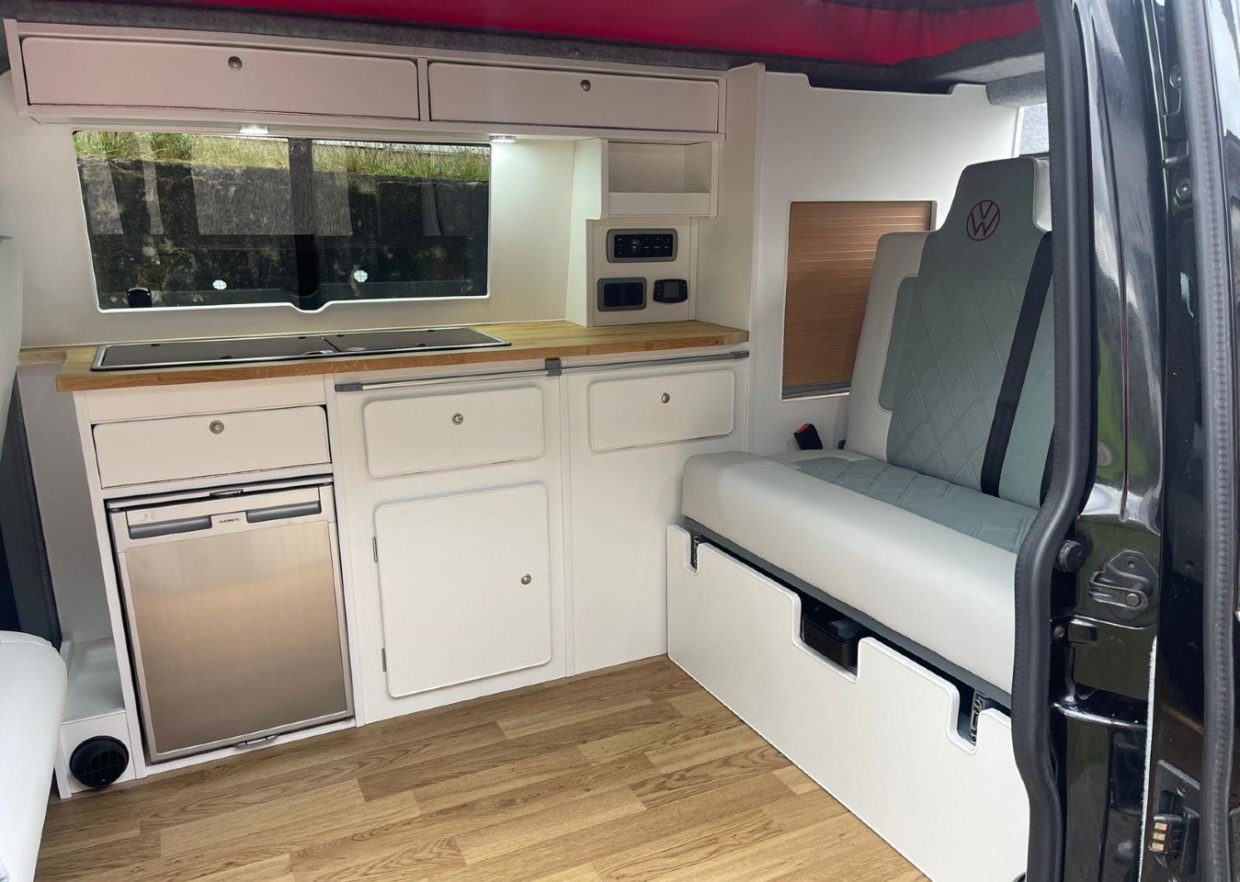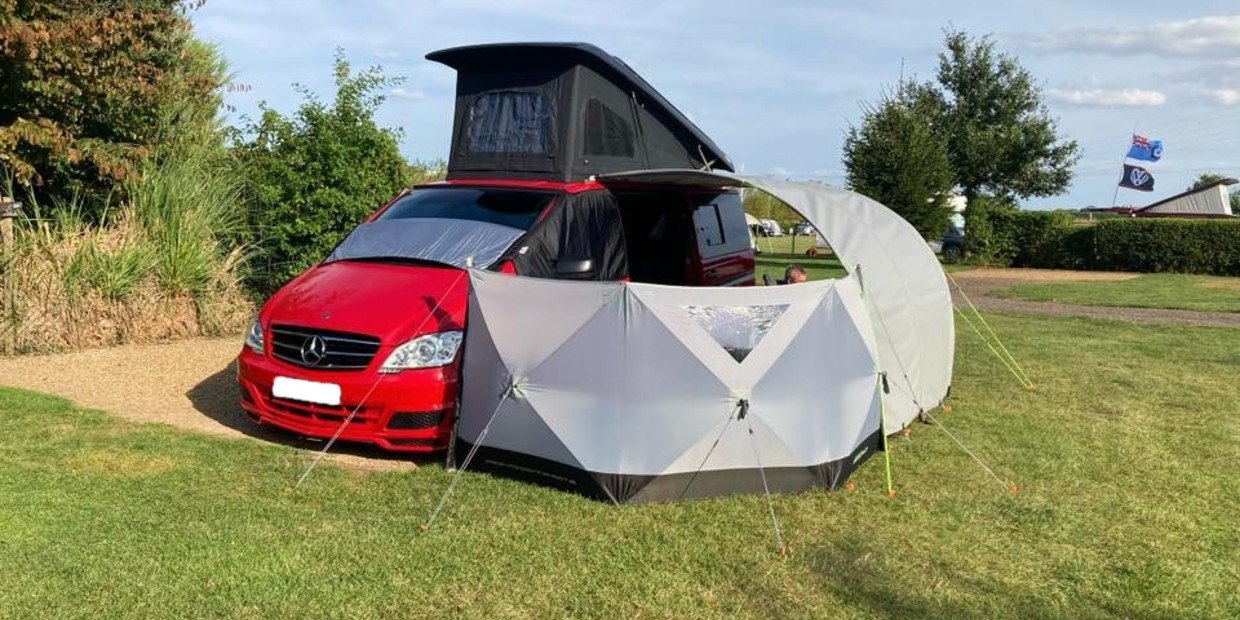There’s something uniquely rewarding about turning an empty van into a fully kitted-out camper. Whether you’re planning long weekends in the Lake District, a summer road trip through Cornwall, or even an adventure across Europe, a good self-build conversion can transform your van into a comfortable home on wheels.
But what modifications are truly worth doing if you’re tackling a DIY campervan project? From insulation to electrics, we’ve seen it all and below are 10 of the best modifications we recommend.
1. Insulation & Soundproofing
Every solid campervan conversion starts with insulation. British weather is unpredictable, and without proper insulation, you’ll quickly notice how hot your van gets in summer and how bitterly cold it feels in winter. Many self-builders opt for materials such as foil-backed insulation boards, sheep’s wool, or recycled fibre insulation. Adding sound-deadening panels also makes a huge difference to road noise, creating a quieter, cosier interior.
2. Windows, Skylights & Ventilation
Letting natural light flood in completely changes the feel of a van. Side windows create an open, airy living space, while skylights and roof vents are invaluable for fresh air and reducing condensation. For those who plan to cook inside, good ventilation isn’t optional; it’s essential.
3. Electrical System & Solar Power
A reliable electrical system is at the heart of modern campervan living. Many self-builds feature a split charge relay that charges a leisure battery while driving, often backed up by roof-mounted solar panels for off-grid trips. This setup can power lighting, fridges, water pumps and charging points for phones and laptops. If you plan to tour across the UK or Europe, a professionally wired system ensures both safety and convenience.
4. Beds & Seating
Space inside a van is always limited, so flexible sleeping arrangements are key. Rock and roll beds, popular in VW Transporters, allow for both seating and sleeping in one. Swivel front seats are another clever upgrade, instantly increasing living space without eating into floor area. Fixed beds, though less adaptable, are often chosen in larger vans to allow for ample under-bed storage.
5. Kitchen & Cooking Facilities
Even the simplest campervan conversions benefit from a basic kitchen setup. A small sink with running water, a two-burner hob and a fridge or cool box make day-to-day life on the road far easier. Many DIY builders opt for portable gas hobs, but built-in units connected to an LPG system create a more permanent solution. When installing gas, it’s essential to remember that UK regulations require it to be fitted and certified by a qualified Gas Safe engineer.

6. Heating Options
If you plan to use your camper in winter, heating is a worthwhile investment. Diesel heaters are one of the most popular choices, drawing fuel directly from the van’s tank and running efficiently even in freezing temperatures. Other options include LPG heaters or electric fan heaters, which can be plugged into campsite hook-ups. Whatever you choose, it’s vital that heating systems are installed safely and vented correctly.
7. Storage Solutions
Living in a small space demands clever storage. Overhead lockers, under-bed drawers, and pull-out units help you make the most of every inch. A well-thought-out layout means less clutter and more comfort when you’re on the road.
8. Plumbing & Bathroom Facilities
For short trips, a simple water container and a portable toilet may be all you need. For longer adventures, many self-builders add fresh and waste water tanks, a 12v pump system, and even compact shower setups. While not essential for everyone, these additions make extended touring across the UK or EU far more practical.
9. Exterior Upgrades
The outside of the van is just as important as the inside. Roof racks for surfboards or kayaks, bike racks for weekend rides, and awnings for extra sheltered space are popular upgrades. Side ladders and storage boxes also boost functionality, particularly for adventurous travellers.
10. Styling & Interior Comfort
Finally, the fun part: making it your own. Flooring, wall panelling, LED lighting and soft furnishings all contribute to creating a space that feels homely. Many self-builders also take pride in crafting bespoke furniture to match their style, giving the van a unique finish.
Don’t Forget Campervan Insurance
Once you’ve completed your conversion, it’s vital to notify your insurer.
A self-build campervan isn’t the same as a standard panel van, and declaring van modifications ensures you’re properly covered. At Brentacre, we specialise in campervan insurance, including self-builds and heavily modified vans. Whether you’re adding a pop-top roof, fitting solar panels, or installing a rock and roll bed, we understand the work that goes into a conversion and can provide cover that reflects the true value of your van.
Final Thoughts
Converting a van into a camper is one of the most rewarding projects you can take on. From the first strip-out to the finishing touches, every modification brings you closer to a van that’s entirely your own.
We always advise focusing on the essentials first, such as insulation, ventilation, electricity, and a comfortable bed, before moving on to the extras that suit your travel style. With the right upgrades and the right insurance, you’ll be ready to explore the UK and beyond with confidence.


